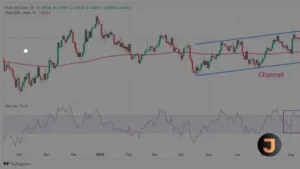Anticipation Builds Ahead of Eurozone Economic Data Release
In the midst of a cautious European trading session on Monday, the EURUSD pair was seen wavering around the significant 1.0700 level. Traders appeared to be treading lightly, with their focus fixed on the upcoming release of key economic indicators from the Eurozone, which include the preliminary Gross Domestic Product (GDP) figures for the first quarter and the Consumer Price Index (CPI) for April.
These forthcoming data points are expected to play a pivotal role in shaping market expectations regarding potential interest rate cuts by the European Central Bank (ECB). Investor sentiment has recently tilted towards the belief that the ECB might initiate a reduction in its Main Refinancing Operations Rate as early as their June meeting.
Last week’s comments by François Villeroy de Galhau, Governor of Banque de France and a member of the ECB Council, have further fueled these expectations. Villeroy suggested that, barring any major changes, there is little reason to delay the onset of interest rate cuts. He also expressed confidence that energy prices are unlikely to escalate further, even with ongoing tensions in the Middle East, which should not deter the ECB’s plans to commence rate reductions in June.
The consensus for a rate cut in June is strong, yet there remains a cloud of uncertainty over whether this will signal the beginning of an extended rate-cutting phase. Opinions among ECB policymakers vary, with Villeroy advocating for subsequent cuts at a “pragmatic pace” following the initial June reduction.
In contrast, Joachim Nagel, another ECB policymaker and head of Bundesbank, voiced last week that a single rate cut in June does not necessarily imply a sequence of further cuts. Nagel’s concerns revolve around persistent service sector inflation driven by robust wage growth, leaving him unconvinced that inflation will align with the ECB’s target promptly and sustainably.
As these discussions unfold, investors have also been monitoring Germany’s preliminary inflation data for April. The expectation is for the annual Harmonized Index of Consumer Prices (HICP) to show a steady increase of 2.3%, which could provide further insights into the inflationary landscape of the region.
With all eyes on the Eurozone’s economic health, Tuesday’s data release is set to be a significant event for markets, potentially influencing the trajectory of monetary policy in the months to come.






